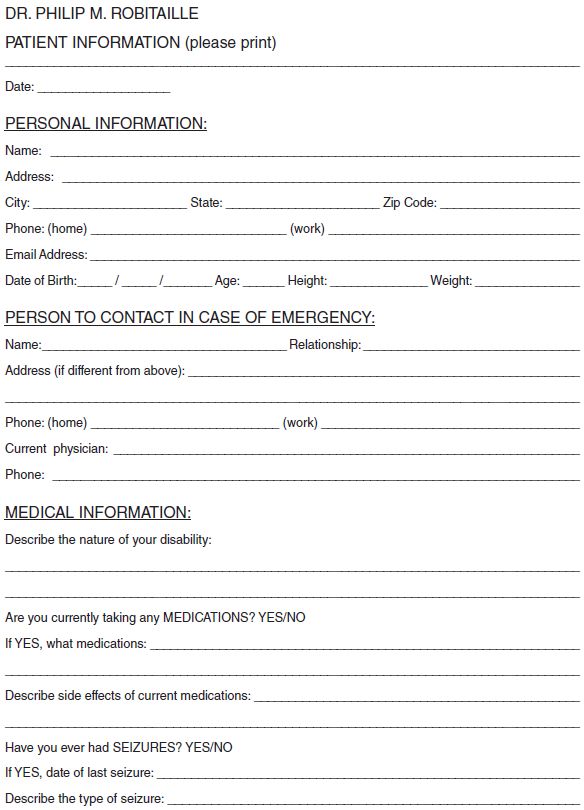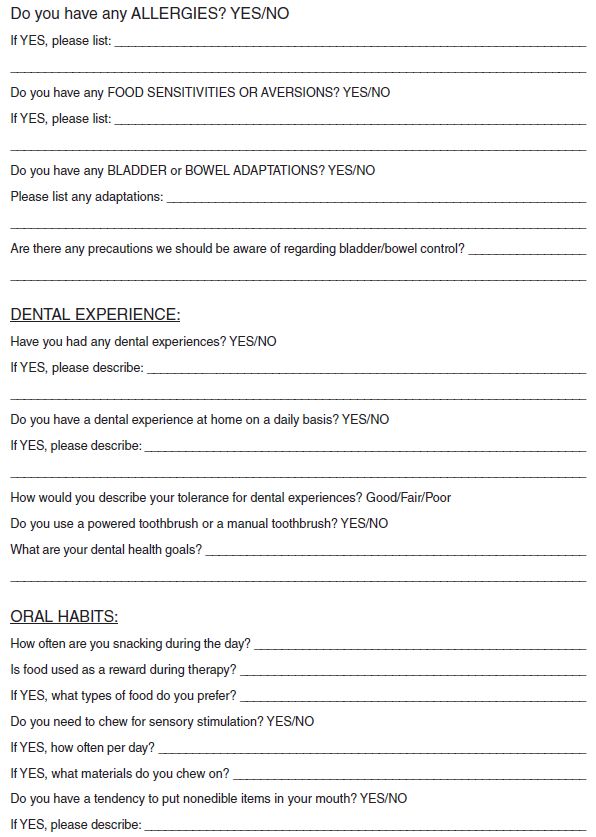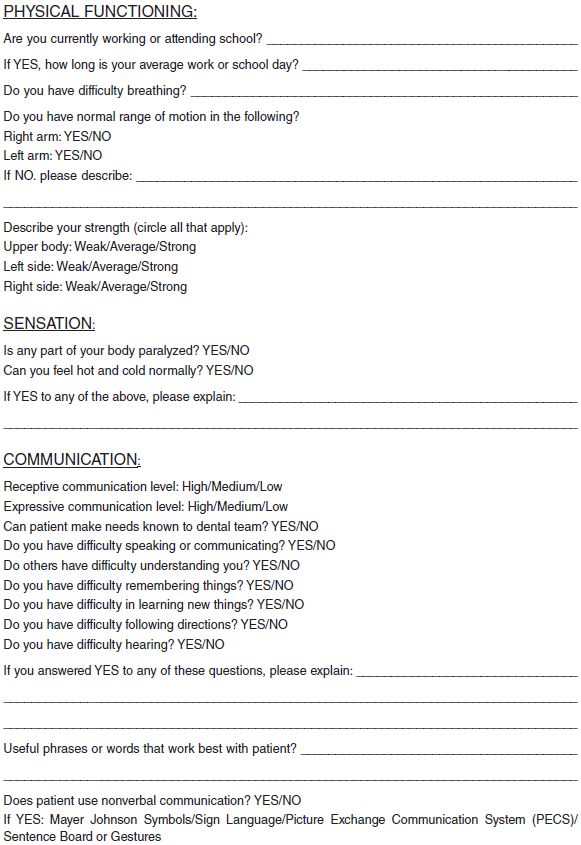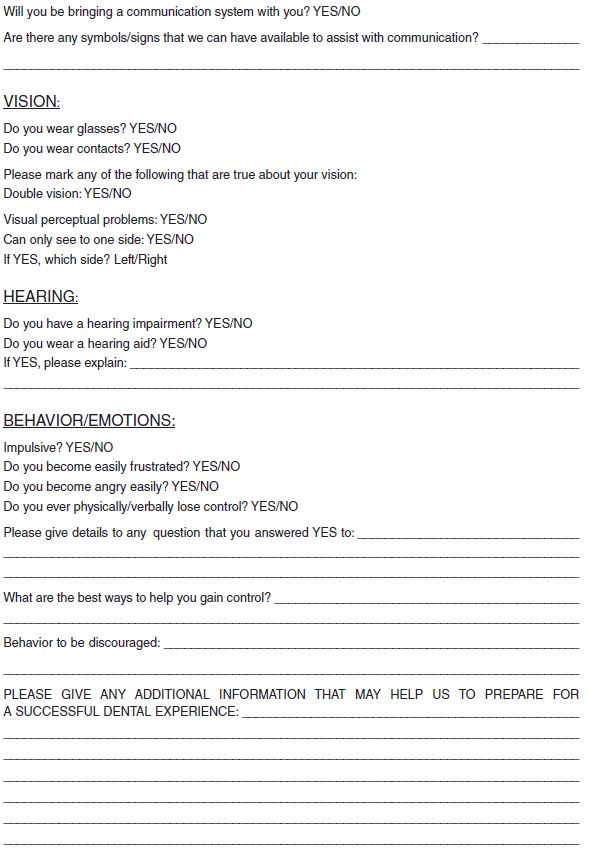7
The exam/hygiene appointment
All patients who present to the dental practice have unique histories, challenges, and preferences. Patients with developmental disorders are no different and need to be treated with open minds and hearts. Treating these patients will provide dental teams with unlimited rewards. This chapter will discuss:
- Strategies to prepare for a successful exam/hygiene appointment.
- Techniques for developing a team approach.
- Approaches for guiding the patient through the hygiene appointment.
- Suggestions for follow-ups and championing opportunities.
Treating the patient with a developmental disorder begins with the initial contact by the parent or caregiver. Depending on the practice, this contact may occur via telephone or internet registration. If the initial patient contact occurs through the internet, a phone call from the practice to the parent/caregiver should be initiated as soon as possible. As part of a “best practice” protocol, when a patient contacts a dental office for a new patient appointment, care must be taken to ensure that the patient is treated with respect and thoughtfulness (DePalma & Raposa 2010). All team members who have this initial contact need to be well informed regarding the dental practice’s philosophy and treatment protocols. Team meetings, huddles, and continuing education programs that focus on new patient appointments are vital to the practice and can help enhance communication skills among the doctor, team members, and patient. These activities are especially important when working with patients with developmental disorders.
During this initial phone contact, the dental professional should explain that a welcome packet will be sent to the caregiver’s attention. This packet should contain:
- A welcome letter explaining the practice philosophy.
- A review of the patient contact information obtained during the phone interview.
- Home care tips and skills to practice for the first visit.
- Patient information and interview forms.
- Office brochure and/or social story.
A social story can be produced by taking photos of all areas of the office and team, including the front of the office, the waiting area, and so forth, and putting them into a PowerPoint, Word or Adobe file. This will allow the addition of the name of each dental professional and room in the practice. The story can also be personalized by adding the patient’s name to the story. This will help the patient to feel as if he or she already ”knows” the practice before actually arriving.
In addition to traditional medical and dental history forms, a patient interview form (Figure 7.1) should be completed and returned to the office so that a telephone interview appointment can be scheduled to review the form. This separate patient information form will describe in more detail the patient’s abilities relative to his or her disorder. It may include, but is not limited to, information such as:
- Type of disorder/diagnosis along with associated medical issues including seizure activity.
- Previous dental experiences.
- Daily oral care regimens, including times and locations.
- Oral habits, including those involving nonedible objects.
- Parent/caregiver’s goals for dental treatment—present and future.
- Allergies, food sensitivities and/or aversions.
- Bladder or bowel adaptations.
- Physical function.
- Level of communication.
- Sensory abilities of sight and sound.
- Psychological status.
- Reward therapies used.
- Sensory stimulations.
Once this information is completed and received by the dental practice, a telephone interview can be scheduled to review the information provided. The phone call itself should take place during a scheduled appointment time when the practice representative can discuss the patient’s abilities, questions, and concerns in detail. The time devoted to obtaining this information helps show the patient and parent/caregiver that the practice is genuinely interested in understanding the patient’s needs and has a desire to establish a positive and trusting relationship. Upon completion of the interview, the first visit with the office can be scheduled. The parent/caregiver should be asked what time of day is appropriate for the appointment, if any coping or comforting devices are needed by the patient in new situations, and if another adult can accompany the patient and parent/caregiver for additional behavioral supports during the appointment.
Figure 7.1 Supplemental form for patients with developmental disorders.




At the initial visit, the dental professional should discuss a goal for that visit with both the patient and parent/caregiver. The goal should be very simple (i.e., getting the patient to sit in the dental chair and allow the practitioner to look in the mouth without any instruments). Once this is accomplished, more and more difficult tasks can be added. Patients with developmental disorders are often distressed when less familiar practitioners are added to their treatments; therefore, it is best to keep clinical team treating the patient to a minimum and as constant as possible. As the patient begins to trust the dental professional team, additional team members can be added to the patient’s care in the event the original clinician is not available. In understanding a patient’s individual needs, the dental professional can be successful by tailoring treatment to suit the patient’s abilities rather than disabilities (DePalma/>
Stay updated, free dental videos. Join our Telegram channel

VIDEdental - Online dental courses


